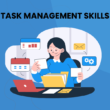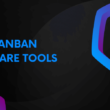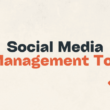Table of Contents Show
In an era where screens and digital notifications increasingly dominate our lives, the concept of digital minimalism emerges as a beacon of tranquility and focus.
Coined and popularized by Cal Newport, digital minimalism is a philosophy that advocates for more intentional use of technology, ensuring that each digital tool and platform we engage with adds real value to our lives, rather than detracting from it.
Understanding Digital Minimalism
Digital minimalism is more than just a trendy concept; it’s a response to the overwhelming presence of technology in our daily lives. It’s about making a conscious decision not to let our gadgets and apps dictate how we spend our time and energy. By prioritizing our digital engagements, we can reclaim our attention and devote it to what truly matters.
The Path to Digital Minimalism
Embarking on the journey to digital minimalism involves several key steps, each designed to foster a healthier relationship with technology.
1. Self-Assessment and Goals Setting
The first step is to conduct a thorough audit of your current digital habits. This involves tracking how much time you spend on various devices and goal-tracking apps, and critically assessing whether these habits align with your personal and professional goals.
Once you have a clear understanding of your digital usage, set specific, achievable goals for what you hope to accomplish through digital minimalism.
2. Principles of Digital Minimalism
Digital minimalism is built on three core principles:
- Clarity: Engage with technology with a clear and intentional purpose, rather than out of habit or boredom.
- Control: Assert control over your digital life by setting boundaries and making conscious choices about when and how you use technology.
- Cultivation: Focus on digital tools and platforms that genuinely add value to your life, and prioritize activities that nurture your well-being and personal growth.
3. Implementing Digital Minimalism
To truly embrace digital minimalism, consider taking a 30-day digital declutter challenge, where you temporarily step back from non-essential digital tools to evaluate what is truly necessary. After this period, reintroduce technology in a way that serves your goals and values. Opt for minimalist technology tools that enhance your productivity and well-being without causing distractions.
4. Maintaining a Digital Minimalist Lifestyle
The key to sustaining a minimalist digital lifestyle is ongoing vigilance. Regularly audit your technology use, adjust your habits as needed, and continue to set clear boundaries for when and how you engage with digital devices. Cultivate a rich offline life filled with activities that bring you joy and fulfillment.
Checklist To Becoming a Digital Minimalist
- Audit Your Digital Use: Start by evaluating your current digital habits. Identify the apps and services that consume most of your time without adding significant value to your life.
- Define Your Core Values: Determine what’s truly important to you. Is it connecting with loved ones, pursuing a hobby, or advancing your career? Let these values guide your technology use.
- Implement a Technology Detox: Consider a 30-day detox from non-essential digital tools to reset your digital habits. This period allows you to rediscover activities and interactions that you might have neglected due to excessive screen time.
- Adopt Minimalist Technology Tools: Opt for tools and apps that align with your minimalist goals. For instance, use apps that limit your time on social media or block distracting websites during work hours.
- Practice Mindful Consumption: Be intentional with your digital consumption. Ask yourself whether an app, service or digital activity aligns with your core values before engaging with it.
- Cultivate Offline Interests: Rediscover the joy of offline activities. Whether it’s reading, gardening, or spending time in nature, make space for pursuits that don’t involve screens.
- Maintain Digital Boundaries: Set clear boundaries for your technology use. This might include designated tech-free zones in your home or specific times when you disconnect from digital devices.
30-Day Plan for Building a Practice of Digital Minimalism
In a world saturated with digital distractions, finding focus and peace can seem like an insurmountable task. Yet, the concept of digital minimalism offers a beacon of hope.
Central to embracing this philosophy is the act of undertaking a Digital Declutter, a month-long plan systematically designed to help you reset your digital habits, reevaluate your technology use, and ultimately, establish a more mindful and intentional relationship with the digital world.
Week 1: Preparation and Planning
Day 1-3: Reflect and Set Intentions
- Begin by reflecting on your current digital habits. Identify what brings value and what detracts from your well-being.
- Set clear, achievable intentions for your digital use post-declutter. Envision how an ideal digitally minimalistic life looks for you.
Day 4-7: Define Your Essentials
- Determine which digital tools are essential for your professional and personal life. Essentials should align with your core values and intentions.
- Inform your friends, family, and colleagues about your digital declutter. Clarify that while you may be less accessible on certain platforms, you’re still reachable through designated means.
Week 2: The Digital Detox
Day 8-14: Disconnect and Detox
- Begin your detox by temporarily eliminating non-essential digital tools and platforms. This includes social media, non-essential apps, and excessive streaming.
- Notice the urge to reach for your phone or browse mindlessly. Acknowledge it, but choose a more fulfilling offline activity instead.
Week 3: Reintroduction and Evaluation
Day 15-21: Mindful Reintroduction
- Slowly start reintroducing digital tools that you’ve identified as essential. With each tool, ask yourself if it aligns with your initial intentions and adds real value.
- Evaluate how each reintroduced tool impacts your life. Does it enhance your productivity, well-being, or relationships? If not, reconsider its necessity.
Week 4: Establishing New Habits and Boundaries
Day 22-28: Set Boundaries and Habits
- Establish clear boundaries for your technology use. This could include specific times of day when you check emails or designated phone-free zones in your home.
- Develop new routines that prioritize offline activities. Whether it’s reading, exercising, or spending time in nature, find pursuits that enrich your life beyond the screen.
Day 29-30: Reflect and Plan Forward
- Reflect on the changes you’ve noticed in your life over the past month. Are you feeling more present, focused, and fulfilled?
- Plan forward. Decide how you’ll maintain your new digital habits and continue to live by the principles of digital minimalism.
The Digital Declutter is more than just a 30-day challenge; it’s the beginning of a lifelong journey toward a more intentional and mindful digital life.
As you progress, remember that digital minimalism isn’t about renunciation of technology but about fostering a relationship with digital tools that serves your well-being, values, and personal aspirations. By committing to this practice, you open the door to a life where technology enhances rather than dictates your daily experiences.
Conclusion
Becoming a digital minimalist is a journey that requires reflection, intentionality, and a willingness to let go of digital clutter. By following the steps outlined above and embracing minimalist technology, you can reclaim control over your digital life, ensuring that technology serves you, not the other way around.
As Cal Newport and other proponents of digital minimalism suggest, this isn’t just about using less technology—it’s about using technology in a way that aligns with your deepest values and aspirations.
More Resources For You:










